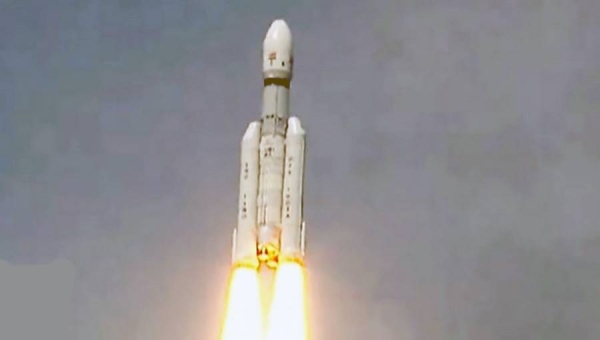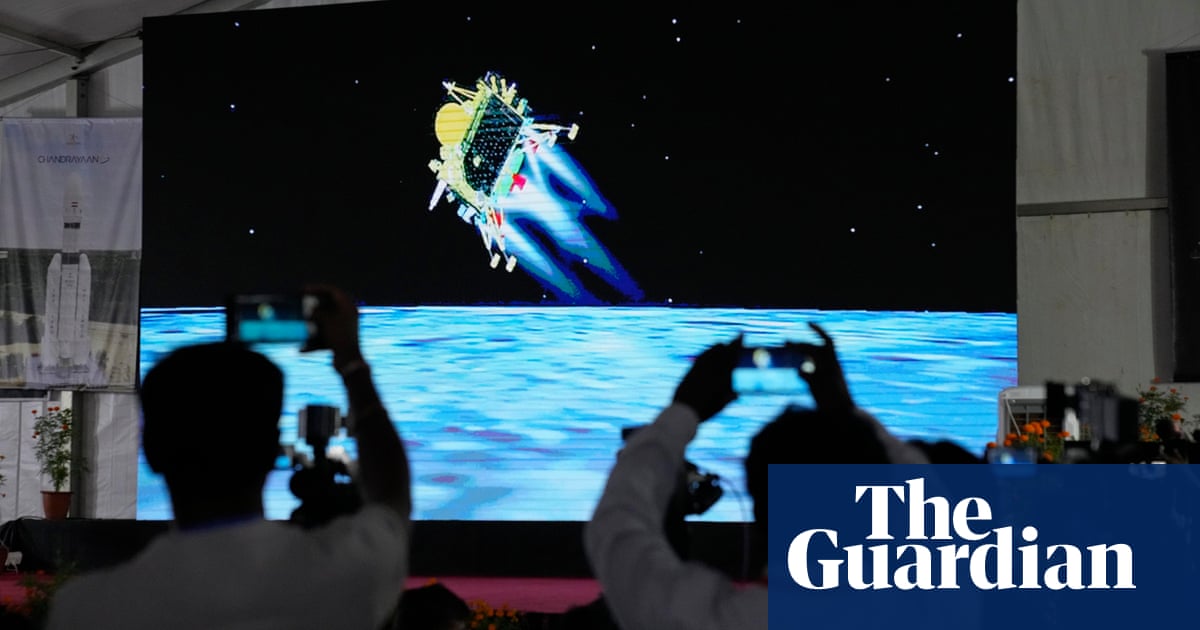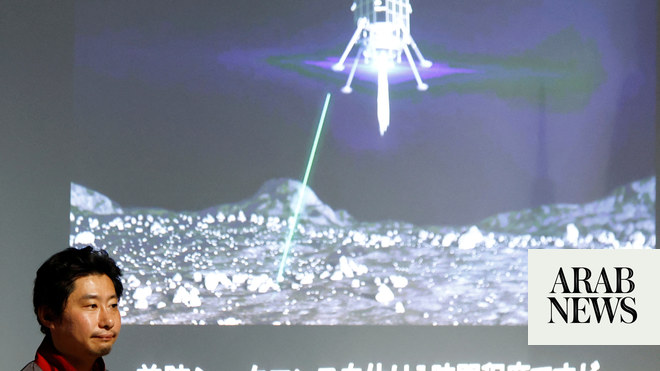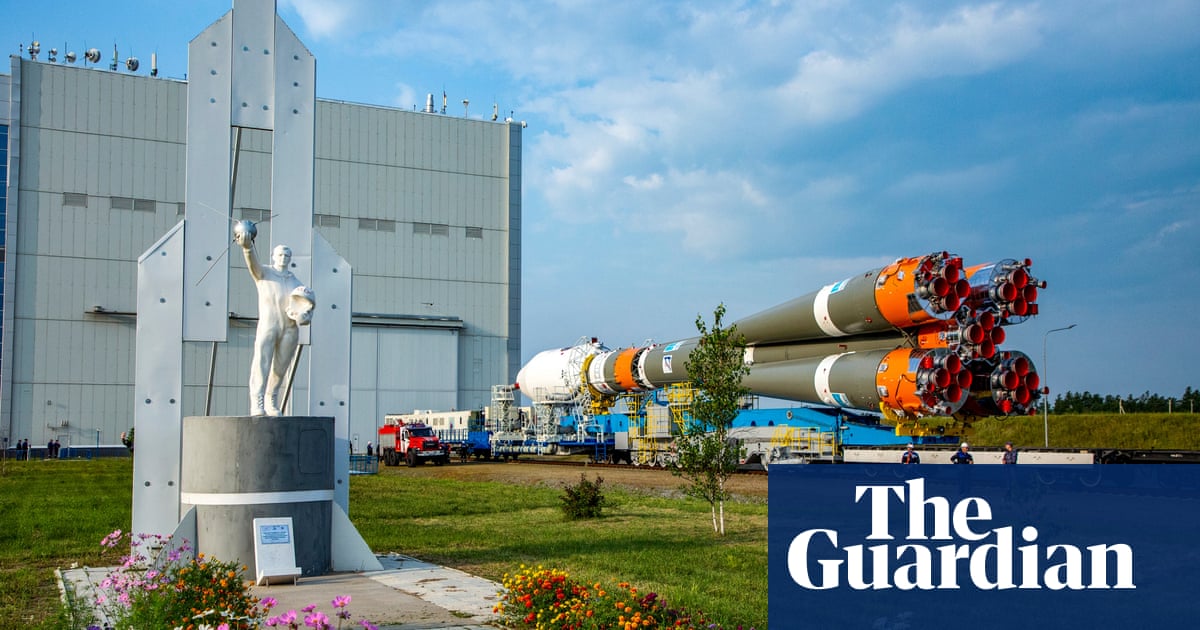
As it was announced that Russia’s first lunar mission in 47 years had crashed on to the moon, India’s own mission, the Chandrayaan-3 lander, moved into prelanding orbit.
News on Sunday of the Russian failure was met with excitement and nervousness in India: excitement that India was now poised to win the race to become the first country to land a craft on the moon’s south pole; nervousness that its mission could also go horribly wrong at the last moment.
Indian space officials have been at pains to downplay any competition with Russia, but there is no doubting that the two countries have been engaged in an unofficial space race with each other, and – more broadly – China and the US, which both have advanced lunar ambitions.
So far, since its launch on 14 July from Sriharikota in Andhra Pradesh, the Indian craft has not experienced any glitches. The Indian Space Research Organisation (ISRO) has said that everything is in place for a successful landing.
Images released on Monday showed craters on the moon’s surface captured by the ISRO craft’s lander hazard detection and avoidance camera, which is designed to help find a safe landing location for the spacecraft.
If all goes well, ISRO said the landing would “mark a significant step forward for Indian science, engineering, technology and industry, symbolising our nation’s progress in space exploration”.
The statement radiates optimism but there can be no doubt about the underlying anxiety. Rough terrain makes a south pole landing difficult. Four years ago, India failed to land a rover on the south pole after a software glitch caused the lander to plough into the moon too quickly.
If India succeeds, it will become the fourth country – after the US, the former Soviet Union, and China – to have an unmanned craft perform a soft landing on the lunar surface, and the first to land a craft on the south pole.
Prior to the Russian attempt, Japan, Israel and the United Arab Emirates had also tried and failed to land on the south pole, highlighting the challenges that lie ahead for India.
Success for India, as the ISRO statement spelled out, would be a moment of national pride, marking the country’s emergence as a space power. Prime Minister Narendra Modi has taken a keen interest in the project and has said he is looking for investment in private space travel.
During his visit to the White House in June, the US and India issued a statement stressing the need for space collaboration.
If it lands successfully, India’s craft is expected to deploy a rover that will conduct a series of experiments over a two-week period.
The experiments are significant because the south pole remains an unknown region. It is thought to contain frozen water which could potentially serve as a reservoir for fuel, oxygen, and drinking water, making it theoretically possible to sustain human life.
Scientists at ISRO have said they learned from the earlier moon mission’s failure and made changes to Chandrayaan-3 that would make a successful landing more likely, including making it possible to touch down safely anywhere within an expanded landing zone in adverse conditions. It has also been equipped with more fuel, more solar panels and sturdier legs.












